Pool cleaning: equipment, tools and methods

The pool is one of the best human inventions. Adults and toddlers alike love to splash around in such a pond with equal enthusiasm. The first mentions of swimming pools have come down to us since the times of Ancient Rome, where only very wealthy people could afford to enjoy this invention. Today, you can take water procedures in an artificially created reservoir at any time of the year without restrictions, if the structure is installed inside the building, and if your pool is located in the open air, then the whole summer season you can arrange a pleasant pastime for yourself, your family and friends.
However, in order for the water in this man-made reservoir to always remain clean and fresh, and most importantly - safe for health, any pool needs regular cleaning... There are many ways and means to solve this problem - we will tell you about them.
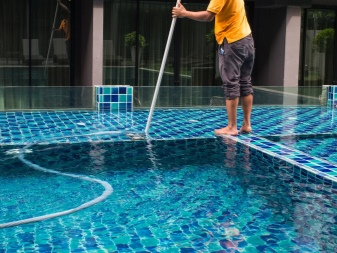

What equipment is required?
The work carried out to clean the pool bowl and disinfect the water is a complex of manipulations performed in a strictly defined sequence. In this case, the complexity of the process directly depends on the area of the pool. It is cleaned using a small set of tools.
- Butterfly net - it is necessary in order to get garbage from the surface of the water, if the water is not planned to be drained for some time, or immediately at the very beginning of the cleaning.
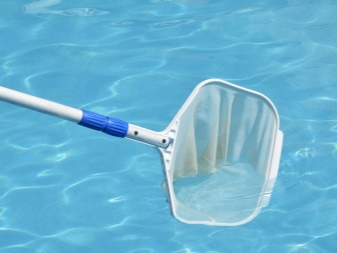
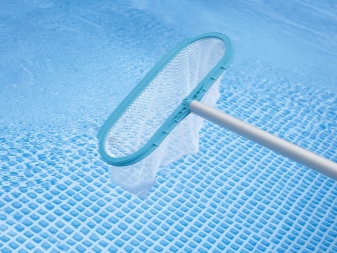
- Brush - it can be bottom (for cleaning the bottom) or side (for cleaning the side walls of the bowl). As a rule, brushes are mounted on special telescopic rods, which make it possible to adjust the desired length, allowing you to reach any corner of the pool.
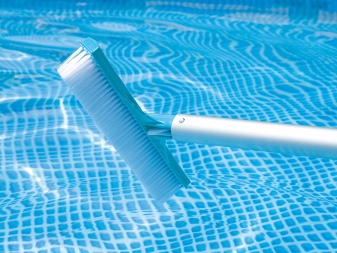

- Vacuum cleaner - using this device, you can clean the pool without draining the water, regularly keeping it in order. The vacuum cleaner perfectly removes sand, silt deposits, small objects. The robot vacuum cleaner, which independently cleans a pool bowl made of concrete or lined with ceramic tiles, has proven itself especially well.
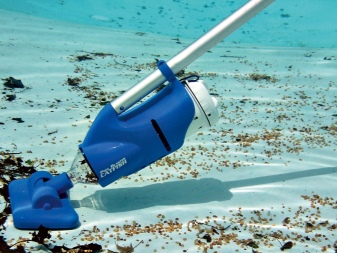
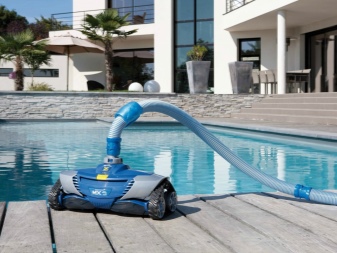
- Filter - this device is necessary for every pool, it is designed to perform the finest water purification. In addition to the filter, the water in the pool can also be purified by an additional device called a skimmer, which collects debris that accumulates in the upper layer of water.
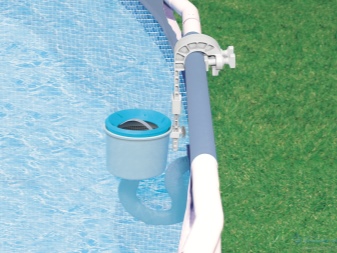
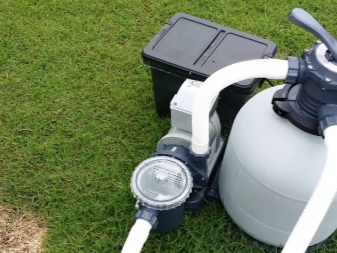
- Hose - it will be required for the preparation of working solutions using chemical reagents.
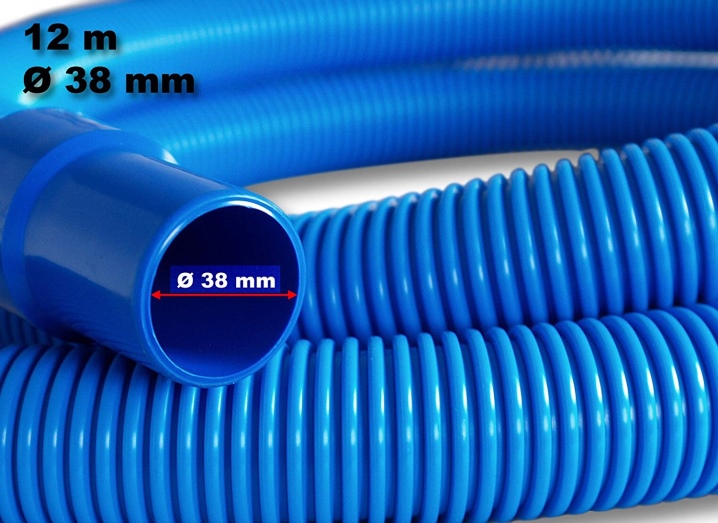
- Rotary machine - this device is needed for high-quality cleaning of the bottom of a large-area pool, it is used together with chemical detergents.
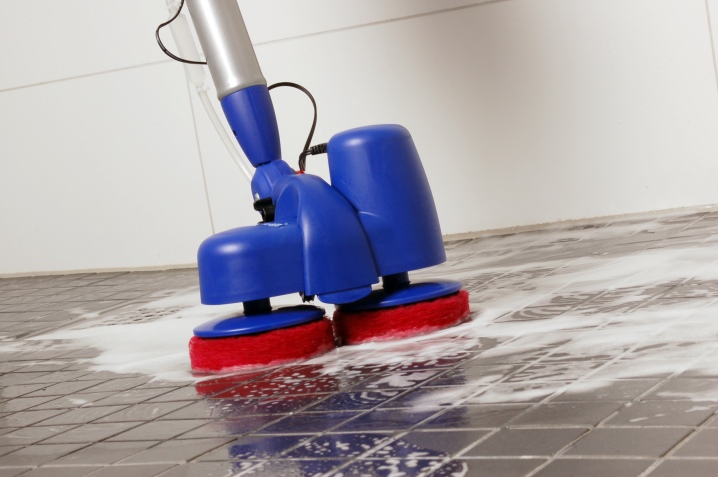
- Watersucker - This device is designed to remove dirty water with working solutions that remain after cleaning work inside the pool bowl.

In addition to equipment for cleaning the pool, you cannot do without the use of special chemicals. It is important not only to mechanically remove all visible contaminants, but also to deactivate the bacterial microflora, which inevitably forms in any body of water where there is no flow of water.
Such products, in addition to performing sanitary functions, eliminate limescale deposits, inhibit the growth of algae, and normalize the degree of water transparency.
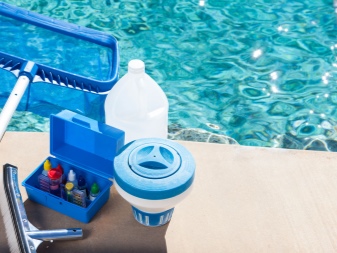
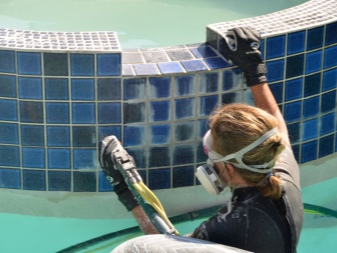
How to choose a chemical?
A chemical cleaner is chosen depending on what problem it has to solve while cleaning the pool.For example, bacterial disinfection will provide a concentrated solution of hydrogen peroxide called perhydrol, which is known as a fairly powerful coagulant. No less effective in this direction is a product with an active chlorine content, called "Whiteness", or it can be preparations without chlorine, but containing bromine in its composition.
Let's consider in more detail each tool, because they have both advantages and disadvantages.
- Chlorine preparations - the most common and effective, they are used for bacterial disinfection. Chlorine products have a low cost, they can be used both in public pools and for home options. Chlorine preparations can be used to treat the pool bowl or chlorinate the water in it.
An unpleasant disadvantage of chlorine is that it provokes allergic reactions, has a pungent specific odor, and at high concentrations can cause burns to the skin and respiratory tract.
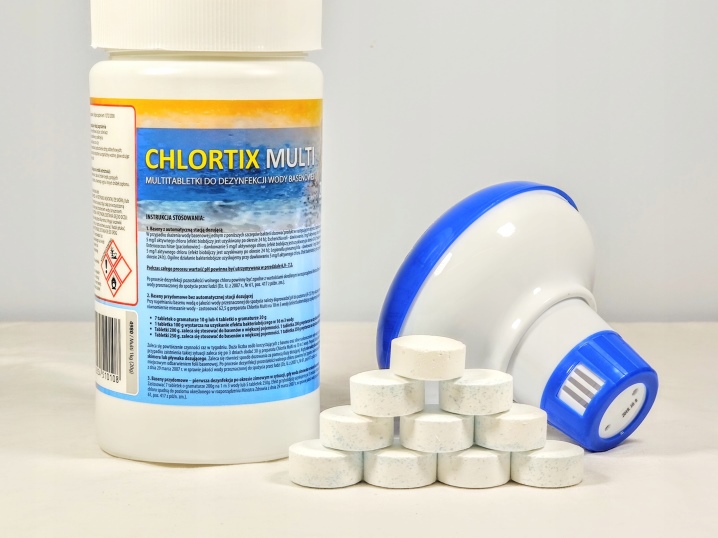
- Bromine preparations - in terms of disinfection efficiency, they are inferior to chlorine, but at the same time they are an order of magnitude more expensive. Such chemicals do not have an unpleasant smell, but it is impossible to achieve complete extermination of pathogenic microorganisms with their help.
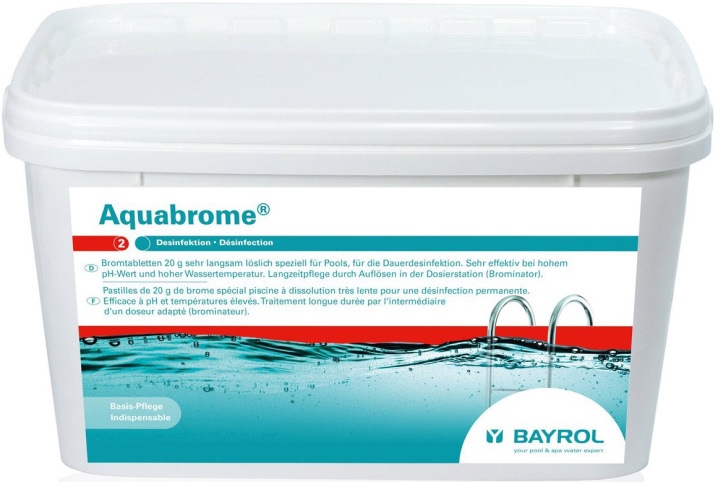
- Active oxygen components - one of the most effective options used in disinfection, but also the most expensive. Synonyms are sodium carbonate peroxyhydrate, it is also peroxysolvate, as well as disodium peroxycarbonate, and so on. Products with active oxygen do not have unpleasant odors, do not worsen the condition of the skin and hair, do not irritate the mucous membrane of the eyes and respiratory tract. But if you exceed the recommended dose, then the agent can cause burns to the skin and mucous membranes.
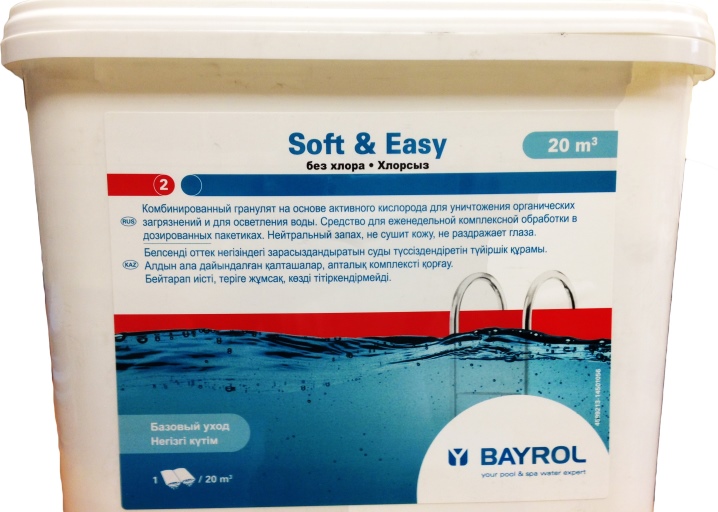
- Hydrogen peroxide - used to disinfect water, it is so safe that it is even used in aquariums. By adding hydrogen peroxide to the water, you will see that it has acquired a bluish tint. In water, peroxide breaks down, but at the same time, the unpleasant odor is eliminated and bacteria are destroyed. After using this agent, it is not recommended to use water for 1 day, but then you do not have to worry about disinfection for at least 7-8 weeks. This product is often used for cleaning swimming pools as it is effective and inexpensive.
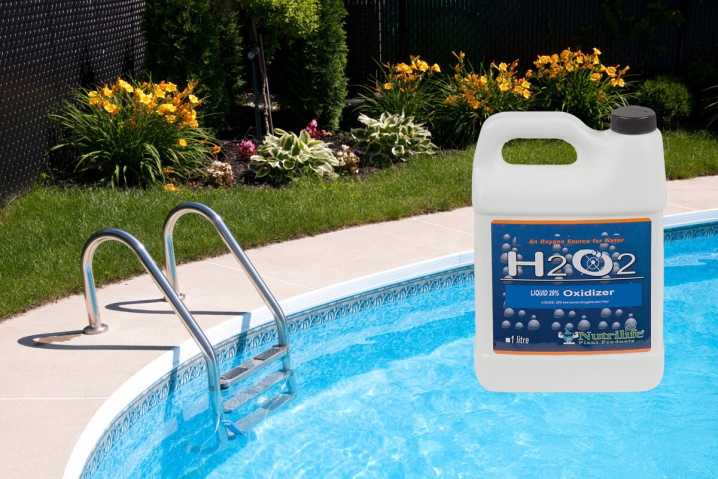
- Copper sulfate - it is also called copper sulfate. This budget solution is one of the most effective for algae and silt control. After using copper sulfate, an unpleasant odor is eliminated and a slight disinfecting effect occurs in the pool, but its duration is short. Thanks to copper sulfate, the water does not become cloudy for a long time, but in case of an overdose or ingress of this substance into the human body, severe intoxication can be caused, which often leads to death.
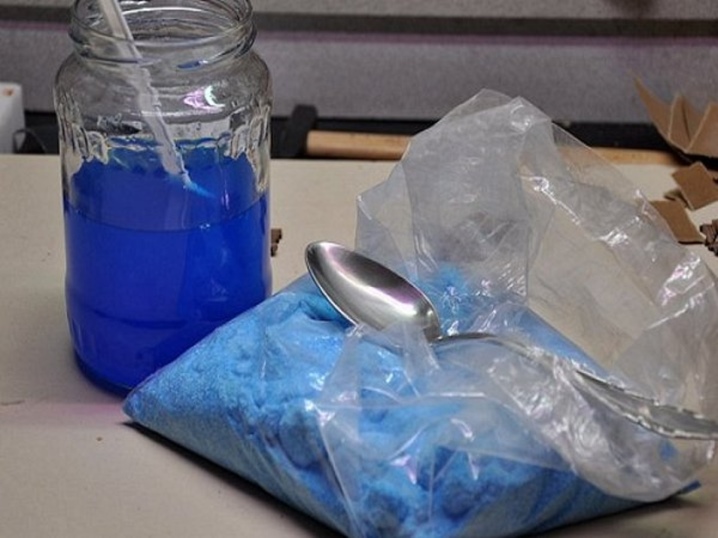
- Algicidal agents - they are also aimed at fighting silt and algae, but they do not contain copper, although they are quite effective in their action. The only drawback of such drugs is their high cost. Such products are indispensable not only for cleaning the pool, but also for the care of the water, which allows you to cope with such a problem as its bloom. The drugs are expensive, but they are hypoallergenic and have a prolonged action.

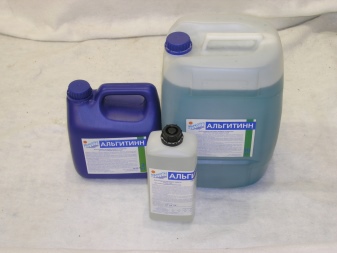
- Flocculants - a group of drugs created on the basis of natural or chemical components. These funds are used to purify water from impurities contained in it, which cannot be captured by any filters. Often they are available in the form of granules, liquids or 5-in-1 tablets - they got this name because of their wide range of applications: normalizing the pH balance of water, disinfecting it, increasing transparency, eliminating unpleasant odors and complete safety for human health.With the help of flocculants, a chemical reaction takes place in the water - and the unwanted substances contained in it fall out in the form of flakes as a sediment, which can be easily collected with filters or a vacuum cleaner.
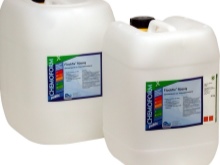
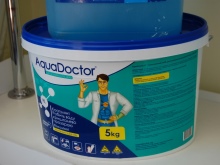
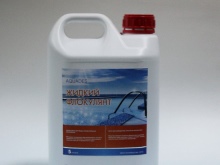
- Brilliant green solution - brilliant green known to everyone from childhood. This cheap and affordable tool is used by the owners of mini-pools located in the country, who are not ready to spend large sums to maintain the purity of the water. Zelenka, indeed, is an effective agent that disinfects water and tints it in a pleasant bluish-green color. In addition, the preparation is safe for skin and hair and does not cause allergic reactions.
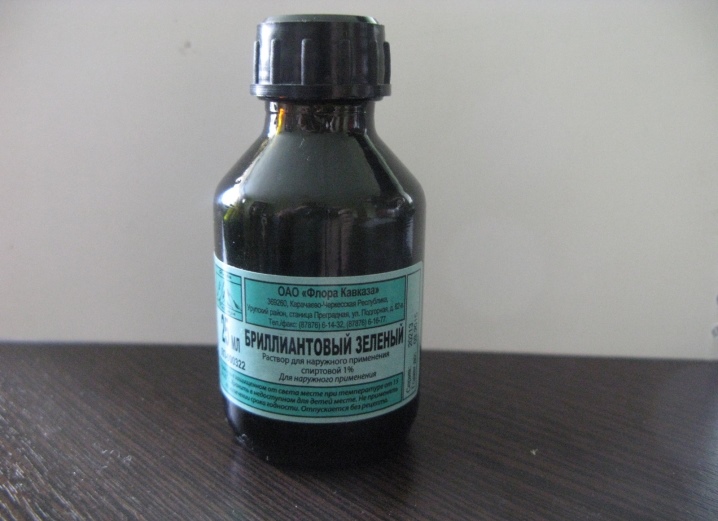
The modern chemical industry develops and produces many effective products in various price ranges, but no matter how good they are, the maintenance of the pool in the proper form is not complete without mechanical cleaning.
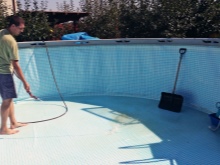

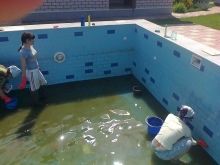
Water purification methods
To keep the water in your pool clean and clear, you will need to clean it regularly. And this should be done not because the cloudy liquid has an unpleasant odor and looks unaesthetic. The problem is that such water contains a huge amount of pathogenic microorganisms that pose a danger to human health.
Any scheme for water purification involves the use of one of three methods, and you just have to make a choice which of them to use.
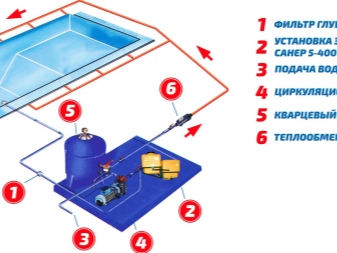
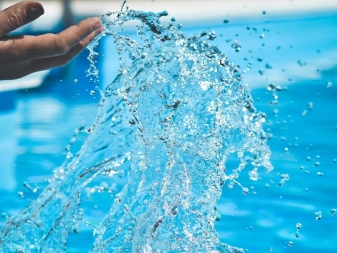
Mechanical
This type of cleaning is carried out using hand or power tools. Its use allows you to remove large debris, sand, dirt from the bottom and walls of the bowl. All the smallest particles that are in the water and the pool tank cause the water to become cloudy, in addition, organic debris is a breeding ground for bacteria. However, mechanical cleaning, no matter how carefully it is carried out, does not make it possible to eliminate bacterial contamination.
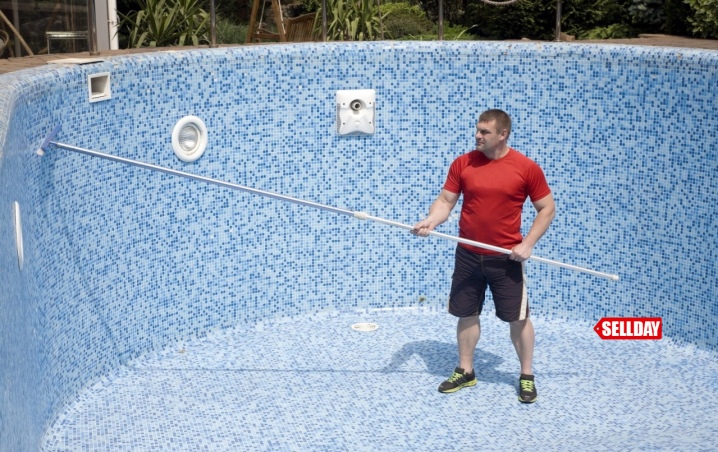
Chemical
The most effective method of fighting bacteria and algae is based on the use of chemicals of various ranges of action. With their help, it is possible to eliminate any bacterial microflora that multiplies rapidly under the influence of heat, sunlight and organic water pollution. Such water has a greenish color and an unpleasant musty odor. In addition, to purify water from mineral sediment, preparations of various composition are used, which help to combat turbidity associated precisely with the presence of various impurities in it.
The instruction for the drug determines its dosage and duration of action.
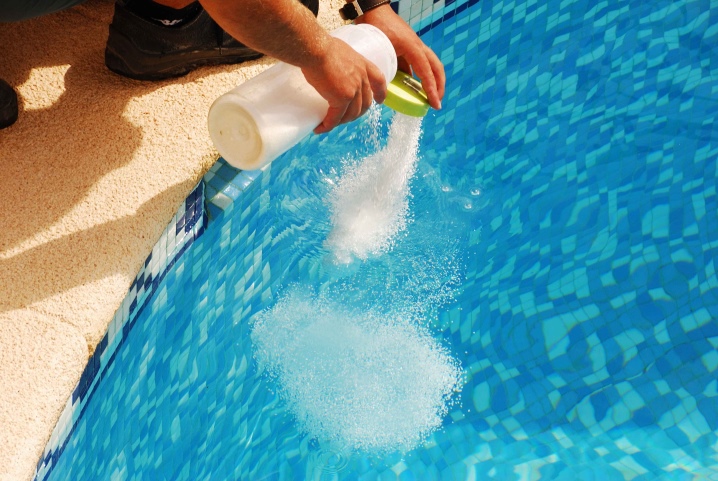
Electrophysical
Electrophysical methods are an alternative to the use of chemicals for cleaning the pool. To do this, you need to have special equipment, so this method is used for stationary pools, and not for summer cottages.
- Ozonation - high concentration ozone is released into the water with the help of the apparatus, which is much more active in its disinfecting properties than oxygen. Ozone inhibits the growth of bacteria and is harmless to human health.
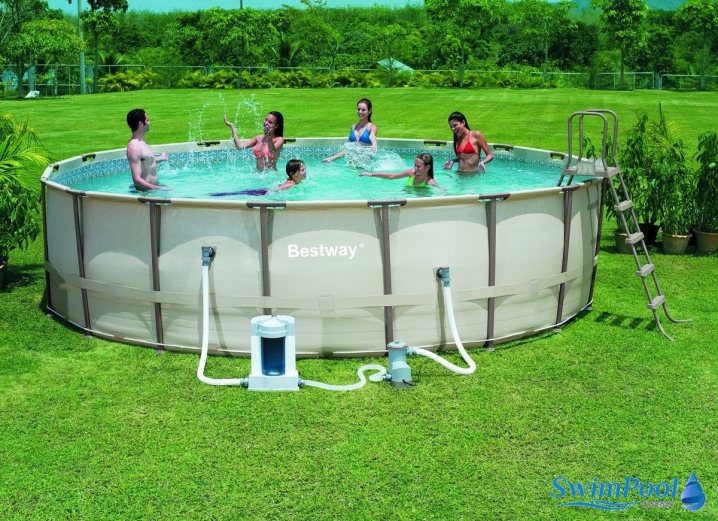
- Ionization - ions of silver or copper are directed into the water, which block the growth of microflora and algae. Such equipment allows not to use chemicals for water treatment at all.
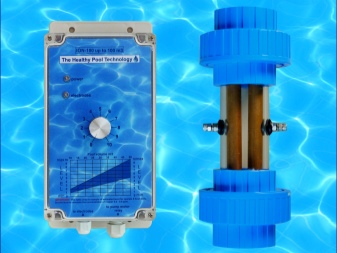
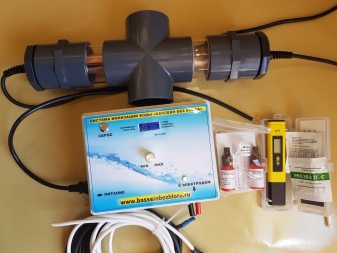
- Ultrasound - a special hardware installation that creates high-frequency sound waves capable of destroying the outer shells of bacteria of any type, preventing them from reproducing and existing.
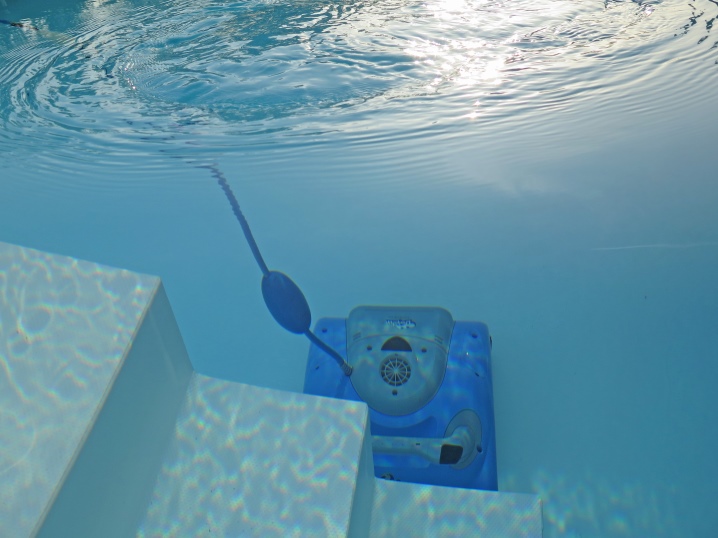
- Ultraviolet - this device creates a light beam of a certain spectrum, the radiation of which has a detrimental effect on microorganisms, suppressing their growth and vitality.

- Salt electrolysis - the effect of this drug is based on its ability to convert table salt ions into a reagent containing chlorine.Further, the chlorine components enter the disinfection work, which destroy pathogenic microorganisms and disinfect the water.
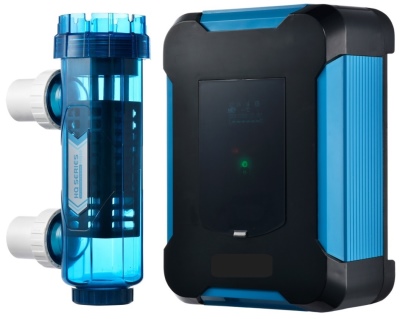
In addition to being thoroughly disinfected, the water must be checked for acidity. For normal and clean pool water, the pH level of the water should be neutral. Such measurements need to be taken regularly, and a shift in the acid-base balance in one direction or another will signal that the pool is dirty and urgently needs cleaning.
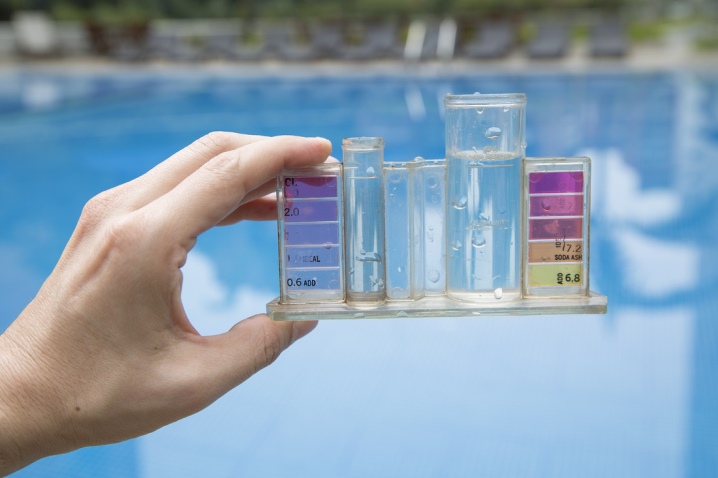
Pool bowl cleaning
Pool cleaning is carried out in a specific sequence.
- Large debris is removed from the surface of the water - to do this, you need to use a net with a long handle.
- The pool water is drained, the filtration system is turned off... It is not necessary to dry the bottom and walls - it is much easier to wash them after draining the water when they are still wet.
- Filters should be inspected, cleaned and ensured that they are working properly. If necessary, the device is serviced or repaired.
- Diagnostics of the state of the pool bowl - determine the degree of its pollution, the need for cleaning from limescale. This preliminary examination allows you to select the necessary chemicals for the job.
- Next, the pool bowl is cleaned from dirt and mineral deposits using acid-containing products. The work is carried out manually with brushes or using electrical appliances. The bottom is cleaned with a special rotary machine using chemicals.
- The remains of dirty water are removed with a water pump, and then rinse the pool tank with a neutralizing solution.
- The next step is to perform treatment of the walls and bottom with agents that prevent the growth of algae and the deposition of scale.
- Then they clean and polish the products made of stainless steel - these are stairs, railings. These objects are treated with slightly acidic compounds and then polished.
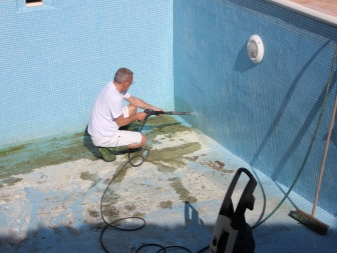
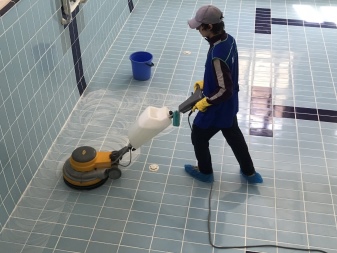
Such procedures are mandatory for cleaning all stationary pools. Depending on their size, the work can take several hours, and sometimes even days. It is a little easier to clean a home used pool, although this process will take you several hours. When draining water from the bowl, it is important to pay attention to the filter system - it must also be cleaned and rinsed.
Otherwise, the sequence of the stages of work is the same as for cleaning a large pool.
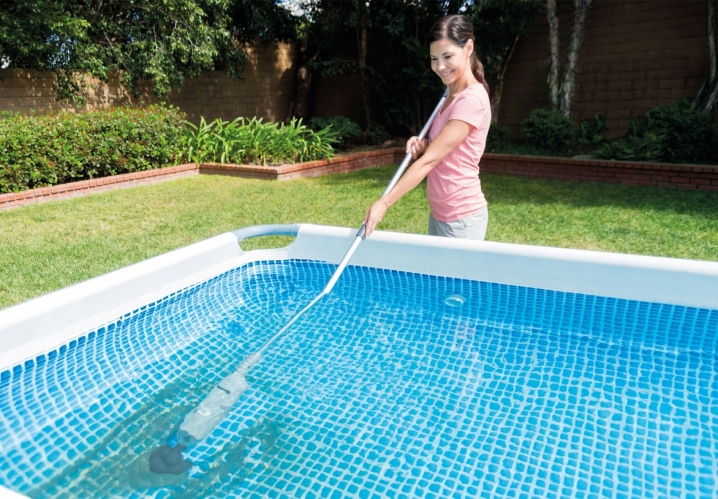
Next, watch the video of cleaning the pool with hydrogen peroxide.



































































The comment was sent successfully.